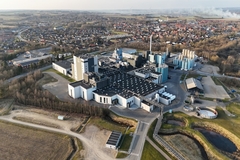
- Industry news
Industry news
- Category news
Category news
- Reports
- Key trends
- Multimedia
- Journal
- Events
- Suppliers
- Home
- Industry news
Industry news
- Category news
Category news
- Reports
- Key trends
- Multimedia
- Events
- Suppliers
Food processing: UPFs in the spotlight as demand for transparency intensifies

The ongoing scientific, regulatory, and industry discussions about ultra-processed foods (UPFs) — what they are, how they’re defined, and their role in health, nutrition, and society — continue while industry players adapt to be seen as more “consumer-friendly.”
UPFs are formulations of ingredients that result from multiple industrial processes and are defined under the NOVA classification system developed by Brazilian researchers. They typically include additives like flavorings, colorings, emulsifiers, stabilizers, and preservatives, and are often high in sugar, salt, and saturated fats.
Food Ingredients First explores what is happening in the UPF space. We speak with Martha Wood, marketing lead at Ulrick & Short, who sheds light on the “debate.”

“Currently, there is no legal definition of ultra-processed foods; however, the most common definition of UPFs is products that have undergone a severe degree of processing. Through the consumer lens, these products are recognized through ingredient declarations that often feature artificial, unrecognizable, or non-store cupboard names.”
“While food processing has existed for millennia, UPFs have become a significant part of today’s food systems due to technological advancements and as a solution to feed a booming population.”
There is an immense amount of complexity in the debate, she adds. “While a lot of the recent attention around UPFs is negative, they do play a pivotal role in delivering convenience, affordability, shelf life, and food safety, as well as fortification to meet the demands of modern lifestyles.”
Targeting transparency
The ongoing debate surrounding UPFs encourages consumers to scrutinize labels more closely, seeking information about ingredients, levels of processing, and nutritional quality.
According to Wood, this has created greater demand for transparency and a preference for natural or minimally processed foods.
“A challenge for manufacturers is removing or reducing less desirable ingredients without compromising product functionality or quality. The opportunity lies in reformulating with clean label ingredients, those processed by physical rather than chemical means, which deliver the required functionality while offering simpler, more recognizable declarations.”
The balance lies in innovation and reformulation, she states. “By using clean label ingredients, manufacturers can maintain the convenience and functionality consumers expect, while delivering simple, transparent ingredient lists.”
Modern food systems
While UPFs remain necessary to meet the needs of modern food systems, the clear trend is toward reducing reliance on artificial or modified ingredients.
“Clean label ingredient solutions are core for manufacturers to preserve taste, texture, and shelf life without the undesirable declarations,” notes Wood. “For example, Ulrick & Short’s newest Virtura range of natural texturizers provides clean label alternatives to commonly used gums and hydrocolloids such as psyllium husk and xanthan gum. These solutions enable manufacturers to reduce or remove chemically modified gums, while still achieving the viscosity and texture required, all with clean label, consumer-friendly declarations.”
 UPFs are industrially formulated products commonly made from substances derived from whole foods like oils, sugars, and starches combined with additives not typically used in home cooking.Ulrick & Short works closely with manufacturers to reformulate products using clean label ingredient solutions that retain functionality and perform under demanding processing conditions.
UPFs are industrially formulated products commonly made from substances derived from whole foods like oils, sugars, and starches combined with additives not typically used in home cooking.Ulrick & Short works closely with manufacturers to reformulate products using clean label ingredient solutions that retain functionality and perform under demanding processing conditions.
“In addition, the Virtura range enhances nutritional profiles by delivering beneficial proteins, amino acids, and fiber. “This demonstrates how clean label solutions can be truly multifunctional — supporting both product functionality and the development of healthier food options,” Woods adds.
The future of UPFs
For Wood, the strongest driver is consumer demand for fewer artificial ingredients and more minimally processed foods. That said, ultra-processed foods will continue to play an important role in delivering convenience, nutrition, and affordability.
“Their future lies in bridging the two — retaining the benefits of modern food processing and reformulating in ways that are cleaner, healthier, and aligned with evolving consumer expectations,” she summarizes.
UPFs linked to disease rates in children
In other news highlights, earlier this year, the US government’s Make America Healthy Again (MAHA) campaign released a report addressing “key drivers” of childhood chronic disease. The document cites a link between the rise of UPFs and adverse health outcomes in children, among other factors.
The MAHA Commission’s leaders, including Health and Human Services Secretary Robert F. Kennedy Jr., discussed the assessment at a White House event in May.
“We will end the childhood chronic disease crisis by attacking its root causes head-on — not just managing its symptoms,” said Kennedy.
The Commission says that while there is no universal definition of UPFs, the NOVA food classification system’s understanding of the term has come to be commonly used: “industrially manufactured food products made up of several ingredients (formulations) including sugar, oils, fats, and salt and food substances of no or rare culinary use.”
The assessment claims that over 50% of the calories consumed by an individual in the US come from UPFs, while in countries like Portugal, Italy, and France, the average consumption of such foods lies between 10% and 31%.
According to MAHA, ultra-processing whole foods and ingredients depletes nutrition. Ultra-processed grains, sugars, and fats “dominate” daily consumption in cookies, cakes, refined breads, snacks, and refined fats such as seed oils from soybean, corn, safflower, sunflower, cottonseed, and canola.
Additionally, a report published in February revealed that the high consumption of UPFs in Canadian preschool-aged male children is linked to increased obesity risk by age five.
“We saw that ultra-processed foods contributed to almost half of a child’s total daily energy intake,” said Kozeta Miliku, assistant professor of nutritional sciences at the University of Toronto and researcher at the Joannah & Brian Lawson Centre for Child Nutrition.
Published in JAMA Network Open, the study claimed to be the first to find sex-driven differences in the effects of UPFs on obesity risk among Canadian children.
Researchers also suggest the Nutri-Score label and food-specific taxes have worked in other countries to lower UPF consumption. India revealed it is doubling down on UPF consumption nationally.
Plant-based & “ultra-processed”
Plant-based alternatives continue in the spotlight due to high food processing levels that are often deemed as “ultra-processed.” Whether snack classics like fish sticks and nuggets or lifestyle foods like sushi, with systems from Planteneers’ fiildFish series manufacturers can bring many different fish alternatives to market.
Whether snack classics like fish sticks and nuggets or lifestyle foods like sushi, with systems from Planteneers’ fiildFish series manufacturers can bring many different fish alternatives to market.
Increased mobility, flexible work schedules, and balancing family life have shifted eating habits in recent years. Instead of the classic three main meals, now the focus is on the evening meal. During the day, small snacks keep hunger at bay, supply new energy, and keep the mood upbeat.
According to Innova Market Insights data, six out of ten consumers say that they would rather eat many small meals than a few big ones. At the same time, consumers’ expectations are rising. They want creations that are healthy and as natural as possible. As a result, plant-based snacks are turning into healthier, higher-quality, more sophisticated mini-meals with new ideas and simple handling.
Planteneers has developed functional systems for the easy manufacture of many snack ideas. For example, the fiildMeat series includes a system for plant-based alternatives to salami sticks. These are free from additives and have considerably less saturated fatty acids than comparable animal products, yet feature a high protein content.
This is an example of plant-based processed foods being deemed healthier and more clean label as consumer demand for less processing and ingredients deepens.










